Exercises after surgery

- Normal use of your arm is important. If you have problems moving your arm after surgery, your doctor can refer you to a physiotherapist in the Breast Centre.
- Begin the following exercises one day after surgery. The exercises should be done 3 times a day until you have full movement in your arm(s).
- If pain stops you from doing your exercises, use your pain medication 30 minutes before you exercise.
- It is normal to feel a gentle stretch while exercising but you should not feel a sharp pain.
1. Arm lifts
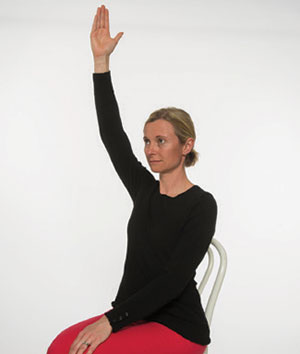
- Sit or stand.
- Lift your arm up, letting the thumb lead the way.
- Repeat 10 times
2. Sideways arm lifts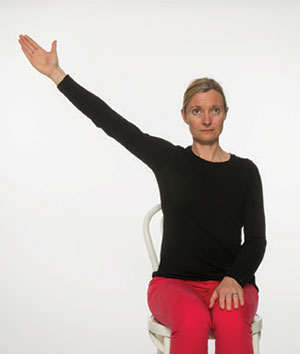
- Sit or stand.
- Lift your arm up sideways with the thumb leading the way.
- Repeat 10 times.
3. Shoulder circles
- Sit or stand.
- Roll your shoulders forwards and backwards.
- Repeat 10 times in both directions
4. Shoulder Blade Squeeze
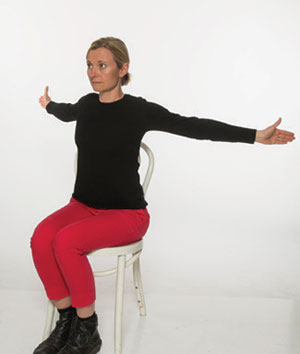
- Sit with your back straight and feet firmly on the floor.
- Pull your shoulder blades together while turning your palms forward.
- Hold for 5 seconds, repeat 5 times.
* The exercises in this guide have been adapted from the booklet Exercises after Breast Surgery, Canadian Cancer Society, 2015.
Exercises for patients having a lumpectomy and axillary lymph node dissection surgery »
Exercise is an important part of your recovery after surgery for breast cancer. It can help you:

- Reduce after surgery limitations in shoulder range of motion.
- Regain and maintain normal movement in your arms and shoulders.
- Reduce pain in your chest wall, shoulders, neck and back.
- Return to your daily activities faster such as dressing, bathing and driving.
- Keep your muscles strong.
- Improve overall well being.
Instructions:
- Begin exercises the day after your surgery.
- Plan to take your pain medication 20 to 30 minutes before doing your exercises.
- Breathe deeply and often as you do each exercise.
- Do the exercises 3 times a day, every day, until you have regained full range of motion in your arm(s).
- Try to do the exercises daily so you do not forget. For example, you could do the exercises after breakfast, lunch and dinner.
Stage 1: Exercises to do while you still have your drain(s) in place
1. Pump It Up
This exercise helps reduce swelling after surgery by using your muscles as a pump to improve the circulation in your affected arm (on the same side as your surgery).

- Lie on your unaffected side with your affected arm straight out, resting on top of a pillow.
- Slowly bend your elbow while making a fist at the same time.
- Next, slowly straighten your elbow while opening your fist at the same time.
- Repeat this pumping motion 15 to 25 times.
If you had surgery on both sides of your chest, repeat the exercise lying on the opposite side of your body.
2. Shoulder Circles
This exercise can be done sitting or standing. It’s a good warm-up exercise and can help relieve tension in your shoulders.
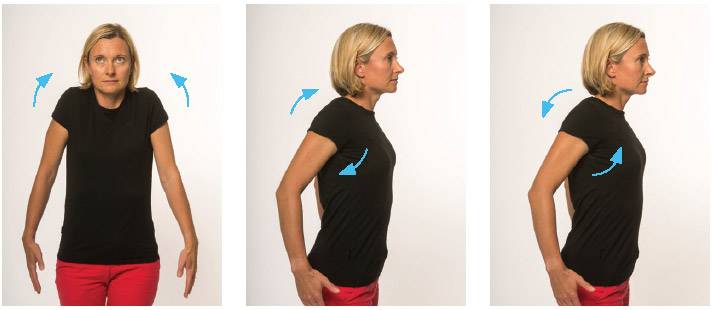
- Lift both shoulders up toward your ears. Keep your chin tucked in slightly.
- Gently rotate both shoulders forward, and then slowly down and back, making a circle.
- Make 5 slow circles in one direction, then switch and make 5 slow circles in the opposite direction.
3. Arm Lifts
This exercise can be done sitting or standing. It helps improve movement in your shoulders.
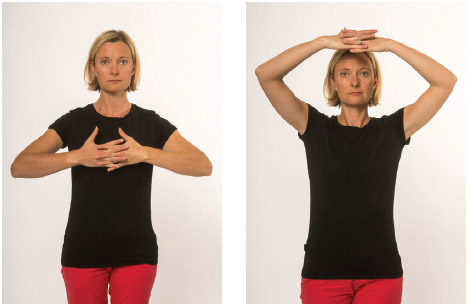
- Clasp your hands together in front of your chest. Point your elbows out.
- Slowly lift your arms upwards until you feel a gentle stretch, but no pain.
- Hold for 5 to 10 seconds (or 5 deep breaths) and then slowly return to the start position.
- Repeat 5 to 10 times.
4. Shoulder Blade Squeeze
This exercise can be done sitting (without resting your back on the chair) or standing. It helps to stretch your chest muscles.
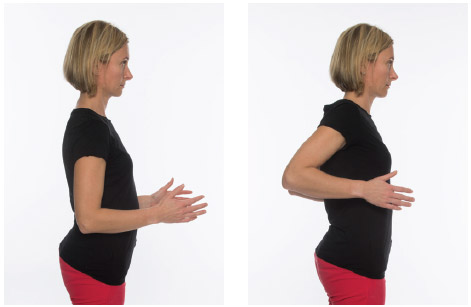
- Hold your arms at your side against your body with your elbows bent.
- Slowly bring your elbows straight backwards, while squeezing your shoulder blades together to feel a gentle stretch.
- Hold this position for 5 to 10 seconds (or 5 deep breaths) and then slowly return to the start position.
- Repeat 5 to 10 times.
Stage 2: Exercises to do after your drain(s) have been removed
You no longer need to do the previous exercises.
1. Wand Exercise
You will need a “wand” to do this exercise – try a broom handle, stick or cane.

- Lie on your back with your knees bent. Hold the wand with both hands. Your hands should be as wide apart as your shoulders.
- Lift the wand up towards your head as far as you can until you feel a gentle stretch, but no pain. Your unaffected arm will help lift the wand higher.
- Hold for 20 to 30 seconds, and remember to breathe. If you find this stretch is too painful, lower your arms slightly, but continue to hold. Then, gently lower arms to the start position.
- Repeat 5 to 10 times.
- To progress, repeat this exercise with your hands slightly wider than your hips or shoulders.
2. Wall Climbing
This exercise helps increase movement in your shoulder. Try to reach a little higher on the wall each day. This exercise is done in 2 positions – A) facing the wall and B) with your affected side to the wall.
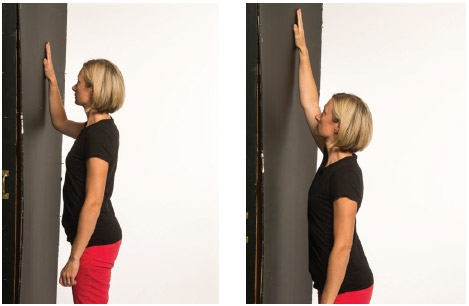
a. Facing the wall
- Stand facing the wall.
- Place the palm of your hand (of your affected arm) flat against the wall.
- Slowly slide your hand up the wall as high as you can go until you feel a stretch, but no pain. Make sure the movement is only coming from your shoulder and you are not bending at your back to get higher up the wall.
- Hold for 20 to 30 seconds and remember to breathe. If you find the stretch is too painful, lower your arm slightly, but continue to hold.
- Slowly slide your hand down the wall to the start position.
- Do a couple of shoulder rolls to reset, then repeat 3 to 5 times.
If you had surgery on both sides of your chest, repeat this exercise with your other arm.
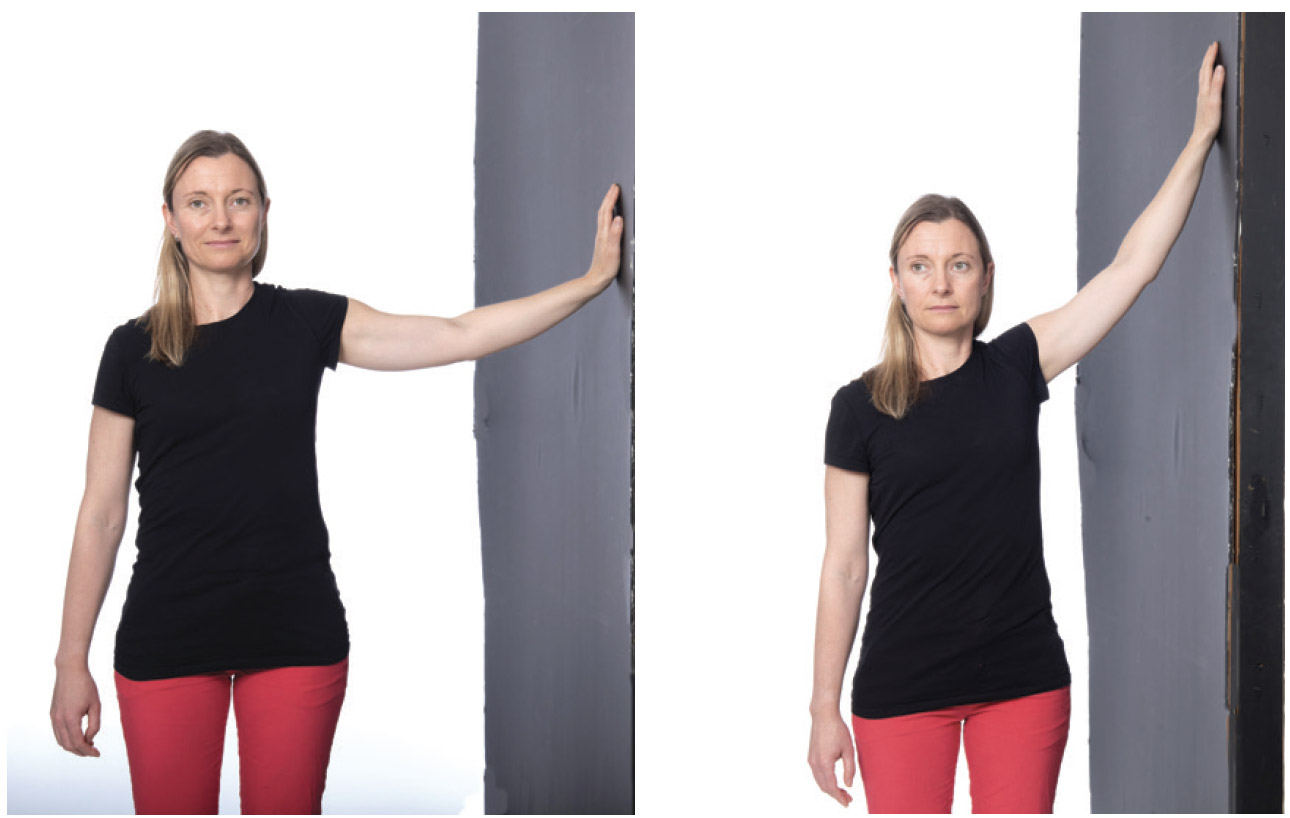
b. Side wall stretch
- Stand with your affected side to the wall.
- Place the palm of your hand flat against the wall at shoulder height.
- Slowly slide your hand up the wall as high as you can go until you feel a stretch but no pain. Do not rotate your body toward the wall, even if it means you can’t go up as high.
- Hold for 20 to 30 seconds and remember to breathe. If you find the stretch too painful, lower your arm slightly, but continue to hold.
- Slowly side hand down the wall to return to the start position.
- Do a couple of shoulder rolls to reset, then repeat 3 to 5 times.
3. Corner Wall Stretch
This exercise is more advanced, so be sure to start with a small hip rotation and perform slowly.
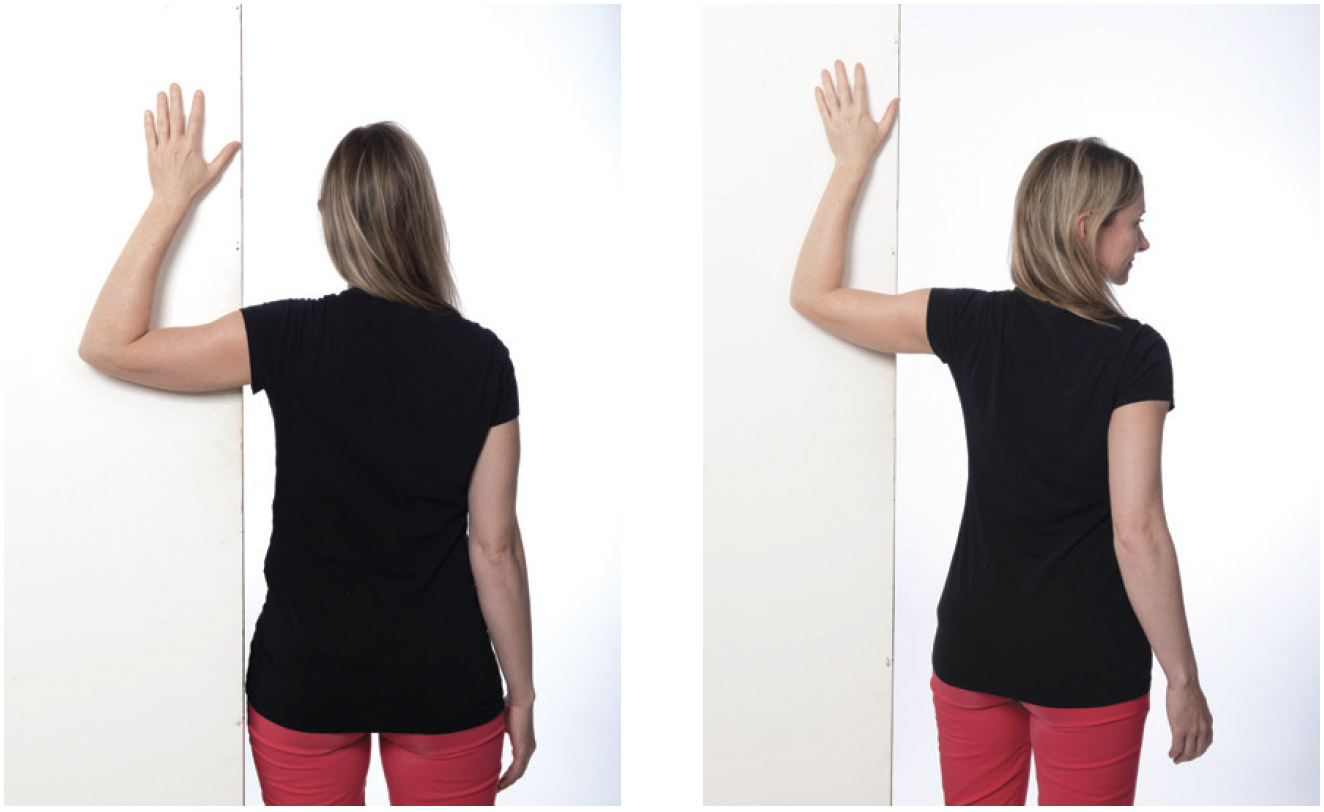
- Stand with your affected arm against the corner of a wall (door frame works as well) with your armpit in the corner and side of your hips pressed against the wall.
- Make goal post arms (picture 1) with affected arm while keeping armpit and hips glued in the same position against the wall.
- Take small steps to turn hips away from the wall (picture 2) until you feel a stretch in any areas of tightness while keeping armpit glued to corner of wall (or as close as possible).
- Hold stretch for 20 to 30 seconds and remember to breathe. If you find the stretch is too painful, back off a little by rotating hips back towards the wall until it feels comfortable, then continue to hold.
- To come out of stretch, take small steps to return to start position. Then, slide hand down the wall.
- Do a couple shoulder rolls to reset, then repeat 3 to 5 times.
Remember, it may take 6 to 8 weeks to regain full movement of your arm(s). If you continue to have difficulties regaining full movement in your arm(s) and shoulder(s) after this time, please ask your surgeon for a referral to physiotherapy and occupational therapy for follow up.
If you receive radiation treatment after surgery, it is important to continue with wall climbing exercises and the corner wall stretch throughout radiation. It is recommended to do a set of these exercises before and after radiation each day to maintain your shoulder movement and to prevent side effects such as radiation-induced fibrosis (RIF) which can make your arm movement difficult again.
Other activities:
It is safe to do light housework during the first 4 weeks after surgery. Do only short periods at a time and rest in between. You can start heavier activities after 4 weeks. Always let pain be your guide – a little discomfort is okay but more pain could mean you are doing too much.
* The exercises in this guide have been adapted from the booklet Exercises after Breast Surgery, Canadian Cancer Society, 2015.






